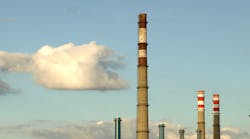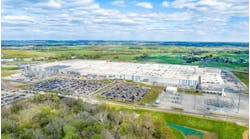When looking at air pollution abatement -- including the reduction of nitrogen oxides (NOx), sulfur dioxide (SO2) and particulate matter (PM) -- U.S. manufacturers spend $5.3 billion annually, more than the other eight countries in the study combined. As a percentage of manufacturing value-added, this amounts to 0.27%, which is higher than every other country except Canada. Another study demonstrates U.S. manufacturers' resounding success in reducing their air pollution. Georgetown economist Arik Levinson shows that between 1990 and 2008, U.S. factory air emissions fell by two-thirds, even as the real value of manufacturing output grew by 35%. Dr. Levinson observed that advances in production techniques led to more than 90% of this cleanup. This accords with a 2013 report by the U.S. Energy Information Administration that shows dramatic reductions in air pollutants from electric power plants over the past two decades. Two pollutants in particular, SO2 and NOx emissions, fell dramatically -- from about 16 million short tons of SO2 and 6 million short tons of NOx in 1990 to about 3.4 million and 1.8 million, respectively, in 2012. The 1990 Clean Air Act Amendments clearly incented industry to develop new technologies that have led to a far more efficient and cleaner manufacturing sector. So the question isn't one of effectiveness, it's one of efficiency -- that is, as we become a cleaner society, how do we reduce pollution without reducing U.S. manufacturers' competitiveness? It's a very relevant question: The law of diminishing returns tells us that as more resources are invested on a fixed resource, you'll eventually reach a point at which additional investments yield progressively smaller results. In pollution control this means it's becoming progressively more expensive for manufacturers to eliminate their remaining emissions.
That brings us to EPA's proposed rules that would further tighten restrictions on smog-causing (i.e., ground-level) ozone, lowering allowable levels from 75 ppb to 65 ppb. Judging by EPA data, if the rules go into effect, three-quarters of the country would be unable to meet the new standard. Pursuing these remaining emissions will demand many, many more resources. Which is why, according to another study by NAM and NERA Economic Consulting, it could be the most expensive regulation ever imposed. A classic example of diminishing returns.
By introducing the most advanced technologies and processes in the world, the American factory sector has made tremendous strides in cleaning up its waste over the past two decades. As manufacturing pollution levels fall, their costs will continue to rise from the current tag of $25 billion per year. Policymakers need to take this, and the overall competitiveness of the sector, into consideration when pursuing their environmental goals.






